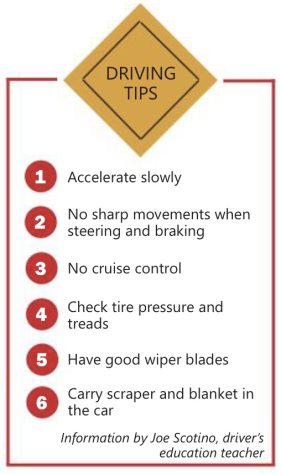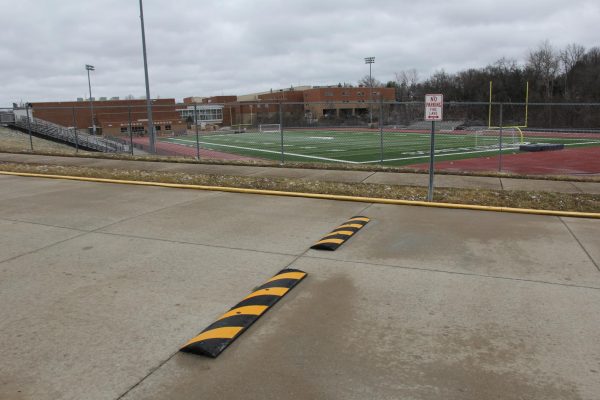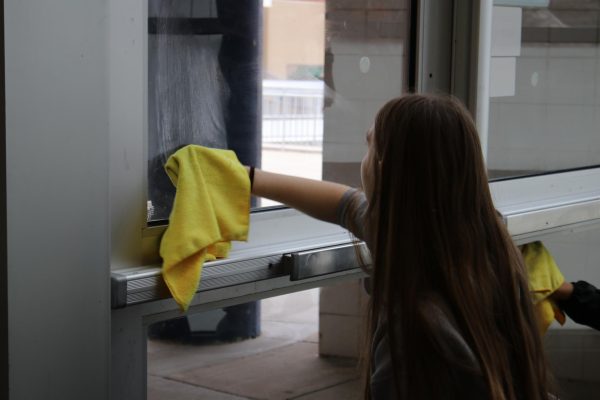Shortage Central
During winter months, plow driver shortage affects RSD
![Road Salt can contaminate drinking water, kill or endanger wildlife with high chloride levels and increase soil erosion, according to the Environmental Protection Agency. Kathryn Lopez, a PhD student researching the impact of road salt, said this substance can create infrastructure problems as well. "It’s a pretty widespread issue that a lot of water utilities are gonna be dealing with," Lopez said. "[Her case study] had some issues with lead release in someone’s plumbing failure and breakdown of home appliances due to excessive salt contamination, and the mains source of salt we think is road salt because there is major winter storms and they have pretty frequent salting that happens."](https://marquettemessenger.com/wp-content/uploads/2022/01/File_000-2.jpeg)
Media by Emma Tyulayev (she/her)
Road Salt can contaminate drinking water, kill or endanger wildlife with high chloride levels and increase soil erosion, according to the Environmental Protection Agency. Kathryn Lopez, a PhD student researching the impact of road salt, said this substance can create infrastructure problems as well. “It’s a pretty widespread issue that a lot of water utilities are gonna be dealing with,” Lopez said. “[Her case study] had some issues with lead release in someone’s plumbing failure and breakdown of home appliances due to excessive salt contamination, and the mains source of salt we think is road salt because there is major winter storms and they have pretty frequent salting that happens.”
Icy roads and heavy snow will present more of a challenge this winter than ever before for the state of Missouri.
“We are asking the public to be aware and watch for information we will put out storm by storm so they have the best information to make travel decisions,” said Ed Hassinger, deputy director and chief engineer of the Missouri Department of Transportation (MoDOT).
Hassinger said the roads will take much longer to be cleared this winter should a storm arise as they are 300 plow drivers short and will not be able to as successfully run operations.
The maintenance professionals at MoDOT are responsible for maintaining 34,000 miles of roads as well as 10,440 bridges in Missouri, and Hassinger said plowing takes the highest priority in the winter as it is a 24/7 responsibility for their staff. However, they are struggling to pay the market demand for people with the skills and time commitment they need.
“School districts need to understand what we are facing and take that into account as they consider decisions on travel if there is winter weather coming,” Hassinger said. “We are coordinating with school districts and our other partners across the state, so no one is surprised.”
Mike Heyman, director of transportation at RSD, said work is being done toward an effective solution to this problem.
Heyman said that during the winter he is on the road with some of his colleagues by 3 a.m. to begin road assessments of ice to help ensure the safety of both students, staff and bus drivers to and from school.
“Our concerns are safe transportation both morning and afternoon,” Heyman said. “We don’t want to get a bus stranded with kids on it.”
Depending on conditions this winter, Heyman said the lack of MoDOT drivers could potentially cost RSD multiple days off of school, though they are hoping to avoid the variety of problems that happen when school is canceled such as child care for working parents.
“Really the bottom line comes down to, is it going to be safe to get the kids to school?” Heyman said. “It really, it doesn’t take much to mess things up.”
Up to 35 percent of the district has the potential to become completely inaccessible in inclement weather, Heyman said. However, he said the crew that services the district does a fantastic job salt treating the roads and sidewalks both the night before and the day of the inclement weather.
“We just have a lot of people behind the scenes working very early when everybody else is nice and warm,” Heyman said.
This causes an entirely different concern for some researchers such as Kathryn Lopez, a PhD student who has been researching how road salt is negatively impacting both the environment and building infrastructure and has seen the effects firsthand.
“It’s salt, and people tend to think it’s not that big of a deal. It’s not like uranium or something exciting, but it is pretty widespread in the Northeast and the Midwest,” Lopez said.
Lopez said her work in Orleans, NY, has focused on communities dealing with expensive home plumbing issues that have resulted from lead release into their systems from the road salt.
Additionally, Lopez said research has been done regarding the breakdown of concrete by road salt and the trickle down of it to local ecosystems and water supplies.
She said there are multiple training programs that teach salt truck drivers how to best apply it.
“You really don’t need that much to get the desired effect,” Lopez said.
Though there are many possible alternatives, Lopez said allowing the snow and ice a chance to melt on its own is the best.

“We reduce the number of people that even have to be on the road to plow, and we also cut back on how much we apply,” Lopez said. “That would definitely help.”
Joe Scotino, driver’s education teacher, said an increased number of accidents that he sees during the winter months is definitely cause for concern due to the roads.
Though the Driver’s Education course covers important driving skills for winter such as moving slowly with gentle acceleration and with no sharp movements, Scotino said inexperienced and distracted drivers will still be a problem.
“I would recommend that [RSD] take off as many days necessary to get all students to school safely on time,” Scotino said. “In St. Louis we only have a few good snows a year, and when that does happen, drivers tend to drive the same and not slow down and drive more responsibly.”
Your donation will support the student journalists of Marquette High School. Your contribution will allow us to purchase equipment and cover our annual website hosting costs. You may become a PATRON by making a donation at one of these levels: White/$30, Green/$50, Blue/$100. Patron names will be published in the print newsmagazine, on the website and once per quarter on our social media accounts.






